Internet of Things - Overview
IoT systems allow users to achieve deeper automation, analysis, and integration within a system. They improve the reach of these areas and their accuracy. IoT utilizes existing and emerging technology for sensing, networking, and robotics.
IoT exploits recent advances in software, falling hardware prices, and modern attitudes towards technology. Its new and advanced elements bring major changes in the delivery of products, goods, and services; and the social, economic, and political impact of those changes.
IoT − Key Features
The most important features of IoT include artificial intelligence, connectivity, sensors, active engagement, and small device use. A brief review of these features is given below −
- AI − IoT essentially makes virtually anything “smart”, meaning it enhances every aspect of life with the power of data collection, artificial intelligence algorithms, and networks. This can mean something as simple as enhancing your refrigerator and cabinets to detect when milk and your favorite cereal run low, and to then place an order with your preferred grocer.
- Connectivity − New enabling technologies for networking, and specifically IoT networking, mean networks are no longer exclusively tied to major providers. Networks can exist on a much smaller and cheaper scale while still being practical. IoT creates these small networks between its system devices.
- Sensors − IoT loses its distinction without sensors. They act as defining instruments which transform IoT from a standard passive network of devices into an active system capable of real-world integration.
- Active Engagement − Much of today's interaction with connected technology happens through passive engagement. IoT introduces a new paradigm for active content, product, or service engagement.
- Small Devices − Devices, as predicted, have become smaller, cheaper, and more powerful over time. IoT exploits purpose-built small devices to deliver its precision, scalability, and versatility.
IoT − Advantages
The advantages of IoT span across every area of lifestyle and business. Here is a list of some of the advantages that IoT has to offer −
- Improved Customer Engagement − Current analytics suffer from blind-spots and significant flaws in accuracy; and as noted, engagement remains passive. IoT completely transforms this to achieve richer and more effective engagement with audiences.
- Technology Optimization − The same technologies and data which improve the customer experience also improve device use, and aid in more potent improvements to technology. IoT unlocks a world of critical functional and field data.
- Reduced Waste − IoT makes areas of improvement clear. Current analytics give us superficial insight, but IoT provides real-world information leading to more effective management of resources.
- Enhanced Data Collection − Modern data collection suffers from its limitations and its design for passive use. IoT breaks it out of those spaces, and places it exactly where humans really want to go to analyze our world. It allows an accurate picture of everything.
IoT − Disadvantages
Though IoT delivers an impressive set of benefits, it also presents a significant set of challenges. Here is a list of some its major issues −
- Security − IoT creates an ecosystem of constantly connected devices communicating over networks. The system offers little control despite any security measures. This leaves users exposed to various kinds of attackers.
- Privacy − The sophistication of IoT provides substantial personal data in extreme detail without the user's active participation.
- Complexity − Some find IoT systems complicated in terms of design, deployment, and maintenance given their use of multiple technologies and a large set of new enabling technologies.
- Flexibility − Many are concerned about the flexibility of an IoT system to integrate easily with another. They worry about finding themselves with several conflicting or locked systems.
- Compliance − IoT, like any other technology in the realm of business, must comply with regulations. Its complexity makes the issue of compliance seem incredibly challenging when many consider standard software compliance a battle.
Internet of Things - Hardware
The hardware utilized in IoT systems includes devices for a remote dashboard, devices for control, servers, a routing or bridge device, and sensors. These devices manage key tasks and functions such as system activation, action specifications, security, communication, and detection to support-specific goals and actions.
IoT − Sensors
The most important hardware in IoT might be its sensors. These devices consist of energy modules, power management modules, RF modules, and sensing modules. RF modules manage communications through their signal processing, WiFi, ZigBee, Bluetooth, radio transceiver, duplexer, and BAW.

The sensing module manages sensing through assorted active and passive measurement devices. Here is a list of some of the measurement devices used in IoT −
| S.No | Devices | |
|---|---|---|
| 1. | accelerometers | temperature sensors |
| 2. | magnetometers | proximity sensors |
| 3. | gyroscopes | image sensors |
| 4. | acoustic sensors | light sensors |
| 5. | pressure sensors | gas RFID sensors |
| 6. | humidity sensors | micro flow sensors |
Wearable Electronics
Wearable electronic devices are small devices worn on the head, neck, arms, torso, and feet.

Smartwatches not only help us stay connected, but as a part of an IoT system, they allow access needed for improved productivity.
Current smart wearable devices include −
- Head − Helmets, glasses
- Neck − Jewelry, collars
- Arm − Watches, wristbands, rings
- Torso − Clothing, backpacks
- Feet − Socks, shoes
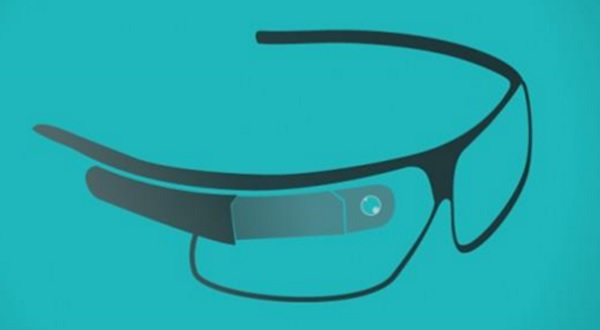
Smart glasses help us enjoy more of the media and services we value, and when part of an IoT system, they allow a new approach to productivity.
Standard Devices
The desktop, tablet, and cellphone remain integral parts of IoT as the command center and remotes.
- The desktop provides the user with the highest level of control over the system and its settings.
- The tablet provides access to the key features of the system in a way resembling the desktop, and also acts as a remote.
- The cellphone allows some essential settings modification and also provides remote functionality.
Other key connected devices include standard network devices like routersand switches.
Internet of Things - Software
IoT software addresses its key areas of networking and action through platforms, embedded systems, partner systems, and middleware. These individual and master applications are responsible for data collection, device integration, real-time analytics, and application and process extension within the IoT network. They exploit integration with critical business systems (e.g., ordering systems, robotics, scheduling, and more) in the execution of related tasks.
Data Collection
This software manages sensing, measurements, light data filtering, light data security, and aggregation of data. It uses certain protocols to aid sensors in connecting with real-time, machine-to-machine networks. Then it collects data from multiple devices and distributes it in accordance with settings. It also works in reverse by distributing data over devices. The system eventually transmits all collected data to a central server.
Device Integration
Software supporting integration binds (dependent relationships) all system devices to create the body of the IoT system. It ensures the necessary cooperation and stable networking between devices. These applications are the defining software technology of the IoT network because without them, it is not an IoT system. They manage the various applications, protocols, and limitations of each device to allow communication.
Real-Time Analytics
These applications take data or input from various devices and convert it into viable actions or clear patterns for human analysis. They analyze information based on various settings and designs in order to perform automation-related tasks or provide the data required by industry.
Application and Process Extension
These applications extend the reach of existing systems and software to allow a wider, more effective system. They integrate predefined devices for specific purposes such as allowing certain mobile devices or engineering instruments access. It supports improved productivity and more accurate data collection.
Internet of Things - Technology and Protocols
IoT primarily exploits standard protocols and networking technologies. However, the major enabling technologies and protocols of IoT are RFID, NFC, low-energy Bluetooth, low-energy wireless, low-energy radio protocols, LTE-A, and WiFi-Direct. These technologies support the specific networking functionality needed in an IoT system in contrast to a standard uniform network of common systems.
NFC and RFID
RFID (radio-frequency identification) and NFC (near-field communication) provide simple, lowenergy, and versatile options for identity and access tokens, connection bootstrapping, and payments.
- RFID technology employs 2-way radio transmitter-receivers to identify and track tags associated with objects.
- NFC consists of communication protocols for electronic devices, typically a mobile device and a standard device.
Low-Energy Bluetooth
This technology supports the low-power, long-use need of IoT function while exploiting a standard technology with native support across systems.
Low-Energy Wireless
This technology replaces the most power hungry aspect of an IoT system. Though sensors and other elements can power down over long periods, communication links (i.e., wireless) must remain in listening mode. Low-energy wireless not only reduces consumption, but also extends the life of the device through less use.
Radio Protocols
ZigBee, Z-Wave, and Thread are radio protocols for creating low-rate private area networks. These technologies are low-power, but offer high throughput unlike many similar options. This increases the power of small local device networks without the typical costs.
LTE-A
LTE-A, or LTE Advanced, delivers an important upgrade to LTE technology by increasing not only its coverage, but also reducing its latency and raising its throughput. It gives IoT a tremendous power through expanding its range, with its most significant applications being vehicle, UAV, and similar communication.
WiFi-Direct
WiFi-Direct eliminates the need for an access point. It allows P2P (peer-to-peer) connections with the speed of WiFi, but with lower latency. WiFi-Direct eliminates an element of a network that often bogs it down, and it does not compromise on speed or throughput.
Internet of Things - Common Uses
IoT has applications across all industries and markets. It spans user groups from those who want to reduce energy use in their home to large organizations who want to streamline their operations. It proves not just useful, but nearly critical in many industries as technology advances and we move towards the advanced automation imagined in the distant future.
Engineering, Industry, and Infrastructure
Applications of IoT in these areas include improving production, marketing, service delivery, and safety. IoT provides a strong means of monitoring various processes; and real transparency creates greater visibility for improvement opportunities.
The deep level of control afforded by IoT allows rapid and more action on those opportunities, which include events like obvious customer needs, nonconforming product, malfunctions in equipment, problems in the distribution network, and more.
Example
Joan runs a manufacturing facility that makes shields for manufacturing equipment. When regulations change for the composition and function of the shields, the new appropriate requirements are automatically programmed in production robotics, and engineers are alerted about their approval of the changes.
Government and Safety
IoT applied to government and safety allows improved law enforcement, defense, city planning, and economic management. The technology fills in the current gaps, corrects many current flaws, and expands the reach of these efforts. For example, IoT can help city planners have a clearer view of the impact of their design, and governments have a better idea of the local economy.
Example
Joan lives in a small city. She’s heard about a recent spike in crime in her area, and worries about coming home late at night.
Local law enforcement has been alerted about the new “hot” zone through system flags, and they’ve increases their presence. Area monitoring devices have detected suspicious behavior, and law enforcement has investigated these leads to prevent crimes.
Home and Office
In our daily lives, IoT provides a personalized experience from the home to the office to the organizations we frequently do business with. This improves our overall satisfaction, enhances productivity, and improves our health and safety. For example, IoT can help us customize our office space to optimize our work.
Example
Joan works in advertising. She enters her office, and it recognizes her face. It adjusts the lighting and temperature to her preference. It turns on her devices and opens applications to her last working points.
Her office door detected and recognized a colleague visiting her office multiple times before she arrived. Joan’s system opens this visitor’s messages automatically.
Health and Medicine
IoT pushes us towards our imagined future of medicine which exploits a highly integrated network of sophisticated medical devices. Today, IoT can dramatically enhance medical research, devices, care, and emergency care. The integration of all elements provides more accuracy, more attention to detail, faster reactions to events, and constant improvement while reducing the typical overhead of medical research and organizations.
Example
Joan is a nurse in an emergency room. A call has come in for a man wounded in an altercation. The system recognized the patient and pulls his records. On the scene, paramedic equipment captures critical information automatically sent to the receiving parties at the hospital. The system analyzes the new data and current records to deliver a guiding solution. The status of the patient is updated every second in the system during his transport. The system prompts Joan to approve system actions for medicine distribution and medical equipment preparation.
IoT - Media, Marketing, & Advertising
The applications of IoT in media and advertising involve a customized experience in which the system analyzes and responds to the needs and interests of each customer. This includes their general behavior patterns, buying habits, preferences, culture, and other characteristics.
Marketing and Content Delivery
IoT functions in a similar and deeper way to current technology, analytics, and big data. Existing technology collects specific data to produce related metrics and patterns over time, however, that data often lacks depth and accuracy. IoT improves this by observing more behaviors and analyzing them differently.
- This leads to more information and detail, which delivers more reliable metrics and patterns.
- It allows organizations to better analyze and respond to customer needs or preferences.
- It improves business productivity and strategy, and improves the consumer experience by only delivering relevant content and solutions.
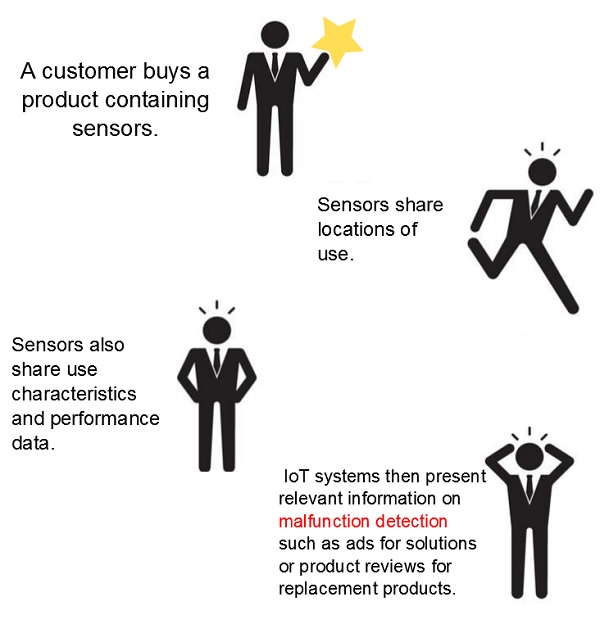
Improved Advertising
Current advertising suffers from excess and poor targeting. Even with today's analytics, modern advertising fails. IoT promises different and personalized advertising rather than one-size-fitsall strategies. It transforms advertising from noise to a practical part of life because consumers interact with advertising through IoT rather than simply receiving it. This makes advertising more functional and useful to people searching the marketplace for solutions or wondering if those solutions exist.
IoT - Environmental Monitoring
The applications of IoT in environmental monitoring are broad − environmental protection, extreme weather monitoring, water safety, endangered species protection, commercial farming, and more. In these applications, sensors detect and measure every type of environmental change.
Air and Water Pollution
Current monitoring technology for air and water safety primarily uses manual labor along with advanced instruments, and lab processing. IoT improves on this technology by reducing the need for human labor, allowing frequent sampling, increasing the range of sampling and monitoring, allowing sophisticated testing on-site, and binding response efforts to detection systems. This allows us to prevent substantial contamination and related disasters.
Extreme Weather
Though powerful, advanced systems currently in use allow deep monitoring, they suffer from using broad instruments, such as radar and satellites, rather than more granular solutions. Their instruments for smaller details lack the same accurate targeting of stronger technology.
New IoT advances promise more fine-grained data, better accuracy, and flexibility. Effective forecasting requires high detail and flexibility in range, instrument type, and deployment. This allows early detection and early responses to prevent loss of life and property.
Commercial Farming
Today's sophisticated commercial farms have exploited advanced technology and biotechnology for quite some time, however, IoT introduces more access to deeper automation and analysis.

Much of commercial farming, like weather monitoring, suffers from a lack of precision and requires human labor in the area of monitoring. Its automation also remains limited.
IoT allows operations to remove much of the human intervention in system function, farming analysis, and monitoring. Systems detect changes to crops, soil, environment, and more. They optimize standard processes through analysis of large, rich data collections. They also prevent health hazards (e.g., e. coli) from happening and allow better control.
IoT - Manufacturing Applications
Manufacturing technology currently in use exploits standard technology along with modern distribution and analytics. IoT introduces deeper integration and more powerful analytics. This opens the world of manufacturing in a way never seen before, as organizations become fullydeveloped for product delivery rather than a global network of suppliers, makers, and distributors loosely tied together.
Intelligent Product Enhancements
Much like IoT in content delivery, IoT in manufacturing allows richer insight in real-time. This dramatically reduces the time and resources devoted to this one area, which traditionally requires heavy market research before, during, and well after the products hit the market.
IoT also reduces the risks associated with launching new or modified products because it provides more reliable and detailed information. The information comes directly from market use and buyers rather than assorted sources of varied credibility.
Dynamic Response to Market Demands
Supplying the market requires maintaining a certain balance impacted by a number of factors such as economy state, sales performance, season, supplier status, manufacturing facility status, distribution status, and more. The expenses associated with supply present unique challenges given today's global partners. The associated potential or real losses can dramatically impact business and future decisions.
IoT manages these areas through ensuring fine details are managed more at the system level rather than through human evaluations and decisions. An IoT system can better assess and control the supply chain (with most products), whether demands are high or low.
Lower Costs, Optimized Resource Use, and Waste Reduction
IoT offers a replacement for traditional labor and tools in a production facility and in the overall chain which cuts many previously unavoidable costs; for example, maintenance checks or tests traditionally requiring human labor can be performed remotely with instruments and sensors of an IoT system.
IoT also enhances operation analytics to optimize resource use and labor, and eliminate various types of waste, e.g., energy and materials. It analyzes the entire process from the source point to its end, not just the process at one point in a particular facility, which allows improvement to have a more substantial impact. It essentially reduces waste throughout the network, and returns those savings throughout.
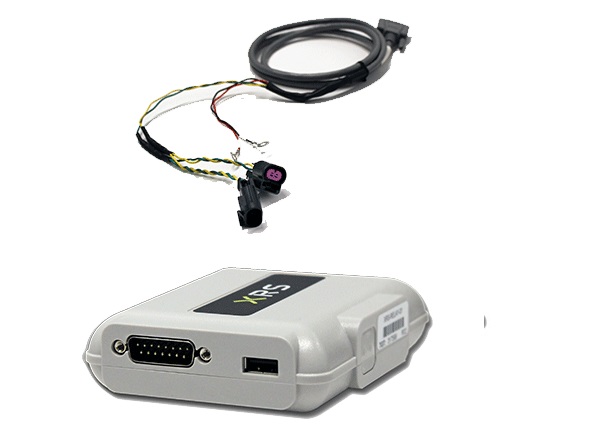
This XRS relay box connects all truck devices (e.g., diagnostics and driver cell) to the XRS fleet management supporting software, which allows data collection.
Improved Facility Safety
A typical facility suffers from a number of health and safety hazards due to risks posed by processes, equipment, and product handling. IoT aids in better control and visibility. Its monitoring extends throughout the network of devices for not only performance, but for dangerous malfunctions and usage. It aids (or performs) analysis and repair, or correction, of critical flaws.
Product Safety
Even the most sophisticated system cannot avoid malfunctions, nonconforming product, and other hazards finding their way to market. Sometimes these incidents have nothing to do with the manufacturing process, and result from unknown conflicts.
In manufacturing, IoT helps in avoiding recalls and controlling nonconforming or dangerous product distribution. Its high level of visibility, control, and integration can better contain any issues that appear.
Internet of Things - Energy Applications
The optimization qualities of IoT in manufacturing also apply to energy consumption. IoT allows a wide variety of energy control and monitoring functions, with applications in devices, commercial and residential energy use, and the energy source. Optimization results from the detailed analysis previously unavailable to most organizations and individuals.
Residential Energy
The rise of technology has driven energy costs up. Consumers search for ways to reduce or control consumption. IoT offers a sophisticated way to analyze and optimize use not only at device level, but throughout the entire system of the home. This can mean simple switching off or dimming of lights, or changing device settings and modifying multiple home settings to optimize energy use.
IoT can also discover problematic consumption from issues like older appliances, damaged appliances, or faulty system components. Traditionally, finding such problems required the use of often multiple professionals.
Commercial Energy
Energy waste can easily and quietly impact business in a major way, given the tremendous energy needs of even small organizations. Smaller organizations wrestle with balancing costs of business while delivering a product with typically smaller margins, and working with limited funding and technology. Larger organizations must monitor a massive, complex ecosystem of energy use that offers few simple, effective solutions for energy use management.
A smart-meter still requires a reader to visit the site. This automated meter reader makes visits unnecessary, and also allows energy companies to bill based on real-time data instead of estimates over time.
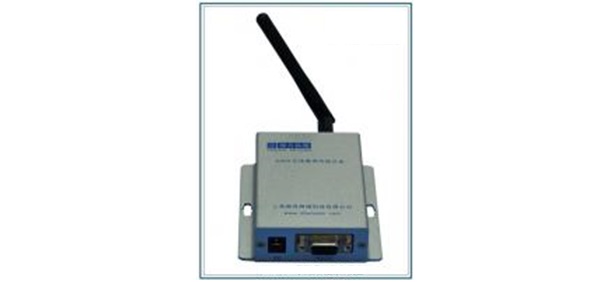
IoT simplifies the process of energy monitoring and management while maintaining a low cost and high level of precision. It addresses all points of an organization's consumption across devices. Its depth of analysis and control provides organizations with a strong means of managing their consumption for cost shaving and output optimization. IoT systems discover energy issues in the same way as functional issues in a complex business network, and provide solutions.
Reliability
The analytics and action delivered by IoT also help to ensure system reliability. Beyond consumption, IoT prevents system overloads or throttling. It also detects threats to system performance and stability, which protects against losses such as downtime, damaged equipment, and injuries.
Internet of Things - Healthcare Applications
IoT systems applied to healthcare enhance existing technology, and the general practice of medicine. They expand the reach of professionals within a facility and far beyond it. They increase both the accuracy and size of medical data through diverse data collection from large sets of real-world cases. They also improve the precision of medical care delivery through more sophisticated integration of the healthcare system.
Research
Much of current medical research relies on resources lacking critical real-world information. It uses controlled environments, volunteers, and essentially leftovers for medical examination. IoT opens the door to a wealth of valuable information through real-time field data, analysis, and testing.
IoT can deliver relevant data superior to standard analytics through integrated instruments capable of performing viable research. It also integrates into actual practice to provide more key information. This aids in healthcare by providing more reliable and practical data, and better leads; which yields better solutions and discovery of previously unknown issues.
It also allows researchers to avoid risks by gathering data without manufactured scenarios and human testing.
Devices
Current devices are rapidly improving in precision, power, and availability; however, they still offer less of these qualities than an IoT system integrating the right system effectively. IoT unlocks the potential of existing technology, and leads us toward new and better medical device solutions.
IoT closes gaps between equipment and the way we deliver healthcare by creating a logical system rather than a collection of tools. It then reveals patterns and missing elements in healthcare such as obvious necessary improvements or huge flaws.
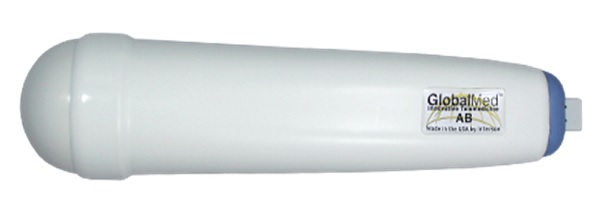
The ClearProbe portable connected ultrasound device can use any computer anywhere as a supporting machine. The device sends all imaging records to the master system.
Care
Perhaps the greatest improvement IoT brings to healthcare is in the actual practice of medicine because it empowers healthcare professionals to better use their training and knowledge to solve problems. They utilize far better data and equipment, which gives them a window into blind spots and supports more swift, precise actions. Their decision-making is no longer limited by the disconnects of current systems, and bad data.
IoT also improves their professional development because they actually exercise their talent rather than spending too much time on administrative or manual tasks. Their organizational decisions also improve because technology provides a better vantage point.
Medical Information Distribution
One of the challenges of medical care is the distribution of accurate and current information to patients. Healthcare also struggles with guidance given the complexity of following guidance. IoT devices not only improve facilities and professional practice, but also health in the daily lives of individuals.
IoT devices give direct, 24/7 access to the patient in a less intrusive way than other options. They take healthcare out of facilities and into the home, office, or social space. They empower individuals in attending to their own health, and allow providers to deliver better and more granular care to patients. This results in fewer accidents from miscommunication, improved patient satisfaction, and better preventive care.
Emergency Care
The advanced automation and analytics of IoT allows more powerful emergency support services, which typically suffer from their limited resources and disconnect with the base facility. It provides a way to analyze an emergency in a more complete way from miles away. It also gives more providers access to the patient prior to their arrival. IoT gives providers critical information for delivering essential care on arrival. It also raises the level of care available to a patient received by emergency professionals. This reduces the associated losses, and improves emergency healthcare.
IoT - Building/Housing Applications
IoT applied to buildings and various structures allows us to automate routine residential and commercial tasks and needs in a way that dramatically improves living and working environments. This, as seen with manufacturing and energy applications, reduces costs, enhances safety, improves individual productivity, and enhances quality of life.
Environment and Conditioning
One of the greatest challenges in the engineering of buildings remains management of environment and conditions due to many factors at work. These factors include building materials, climate, building use, and more. Managing energy costs receives the most attention, but conditioning also impacts the durability and state of the structure.
IoT aids in improving structure design and managing existing structures through more accurate and complete data on buildings. It provides important engineering information such as how well a material performs as insulation in a particular design and environment.
Health and Safety
Buildings, even when constructed with care, can suffer from certain health and safety issues. These issues include poor performing materials, flaws that leave the building vulnerable to extreme weather, poor foundations, and more.
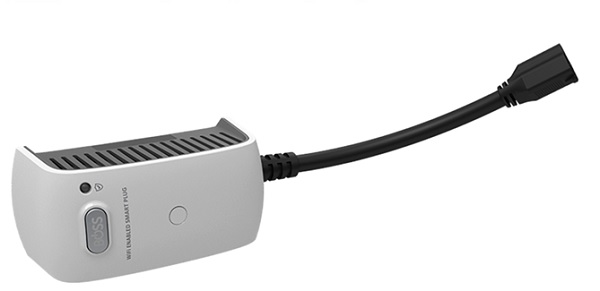
The Boss 220 smart plug allows the user to monitor, control, optimize, and automate all plug-in devices. Users employ their mobile device or desktop to view performance information and control devices from anywhere.
Current solutions lack the sophistication needed to detect minor issues before they become major issues, or emergencies. IoT offers a more reliable and complete solution by observing issues in a fine-grained way to control dangers and aid in preventing them; for example, it can measure changes in a system's state impacting fire safety rather than simply detecting smoke.
Productivity and Quality of Life
Beyond safety or energy concerns, most people desire certain comforts from housing or commercial spaces like specific lighting and temperature. IoT enhances these comforts by allowing faster and easier customizing.
Adjustments also apply to the area of productivity. They personalize spaces to create an optimized environment such as a smart office or kitchen prepared for a specific individual.
IoT - Transportation Applications
At every layer of transportation, IoT provides improved communication, control, and data distribution. These applications include personal vehicles, commercial vehicles, trains, UAVs, and other equipment. It extends throughout the entire system of all transportation elements such as traffic control, parking, fuel consumption, and more.
Rails and Mass Transit
Current systems deliver sophisticated integration and performance, however, they employ older technology and approaches to MRT. The improvements brought by IoT deliver more complete control and monitoring. This results in better management of overall performance, maintenance issues, maintenance, and improvements.
Mass transit options beyond standard MRT suffer from a lack of the integration necessary to transform them from an option to a dedicated service. IoT provides an inexpensive and advanced way to optimize performance and bring qualities of MRT to other transportation options like buses. This improves services and service delivery in the areas of scheduling, optimizing transport times, reliability, managing equipment issues, and responding to customer needs.
Road
The primary concerns of traffic are managing congestion, reducing accidents, and parking. IoT allows us to better observe and analyze the flow of traffic through devices at all traffic observation points. It aids in parking by making storage flow transparent when current methods offer little if any data.

This smart road sign receives data and modifications to better inform drivers and prevent congestion or accidents.
Accidents typically result from a number of factors, however, traffic management impacts their frequency. Construction sites, poor rerouting, and a lack of information about traffic status are all issues that lead to incidents. IoT provides solutions in the form of better information sharing with the public, and between various parties directly affecting road traffic.
Automobile
Many in the automotive industry envision a future for cars in which IoT technology makes cars “smart,” attractive options equal to MRT. IoT offers few significant improvements to personal vehicles. Most benefits come from better control over related infrastructure and the inherent flaws in automobile transport; however, IoT does improve personal vehicles as personal spaces. IoT brings the same improvements and customization to a vehicle as those in the home.
Commercial Transportation
Transportation benefits extend to business and manufacturing by optimizing the transport arm of organizations. It reduces and eliminates problems related to poor fleet management through better analytics and control such as monitoring idling, fuel consumption, travel conditions, and travel time between points. This results in product transportation operating more like an aligned service and less like a collection of contracted services.
Internet of Things - Education Applications
IoT in the classroom combines the benefits of IoT in content delivery, business, and healthcare. It customizes and enhances education by allowing optimization of all content and forms of delivery. It enables educators to give focus to individuals and their method. It also reduces costs and labor of education through automation of common tasks outside of the actual education process.
Education Organizations
Education organizations typically suffer from limited funding, labor issues, and poor attention to actual education. They, unlike other organizations, commonly lack or avoid analytics due to their funding issues and the belief that analytics do not apply to their industry.
IoT not only provides valuable insight, but it also democratizes that information through lowcost, low-power small devices, which still offer high performance. This technology aids in managing costs, improving the quality of education, professional development, and facility management improvement through rich examinations of key areas −
- Student response, performance, and behavior
- Instructor response, performance, and behavior
- Facility monitoring and maintenance
- Data from other facilities
Data informs them about ineffective strategies and actions, whether educational efforts or facility qualities. Removing these roadblocks makes them more effective.
Educators
Information provided by IoT empowers educators to deliver improved education. They have a window into the success of their strategies, their students' perspective, and other aspects of their performance. IoT relieves them of administrative and management duties, so they can focus on their mission. It automates manual and clerical labor, and facilitates supervising through features like system flags or controls to ensure students remain engaged.
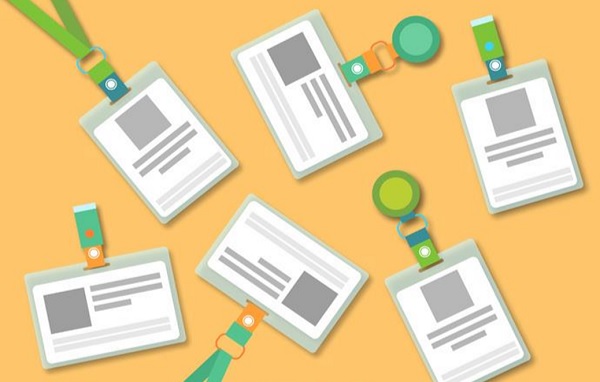
A school in Richmond, California, embeds RFID chips in ID cards to track the presence of students. Even if students are not present for check-in, the system will track and log their presence on campus.
IoT provides instructors with easy access to powerful educational tools. Educators can use IoT to perform as a one-on-one instructor providing specific instructional designs for each pupil; for example, using data to determine the most effective supplements for each student, and autogenerating content from lesson materials on-demand for any student.
The application of technology improves the professional development of educators because they truly see what works, and learn to devise better strategies, rather than simply repeating old or ineffective methods.
IoT also enhances the knowledge base used to devise education standards and practices. Education research suffers from accuracy issues and a general lack of data. IoT introduces large high quality, real-world datasets into the foundation of educational design. This comes from IoT's unique ability to collect enormous amounts of varied data anywhere.
Personalized Education
IoT facilitates the customization of education to give every student access to what they need. Each student can control their experience and participate in instructional design, and much of this happens passively. The student simply utilizes the system, and performance data primarily shapes their design. This combined with organizational and educator optimization delivers highly effective education while reducing costs.
Internet of Things - Government Applications
IoT supports the development of smart nations and smart cities. This includes enhancement of infrastructure previously discussed (e.g., healthcare, energy, transportation, etc.), defense, and also the engineering and maintenance of communities.
City Planning and Management
Governing bodies and engineers can use IoT to analyze the often complex aspects of city planning and management. IoT simplifies examining various factors such as population growth, zoning, mapping, water supply, transportation patterns, food supply, social services, and land use. It gathers detailed data in these areas and produces more valuable and accurate information than current analytics given its ability to actually “live” with people in a city.
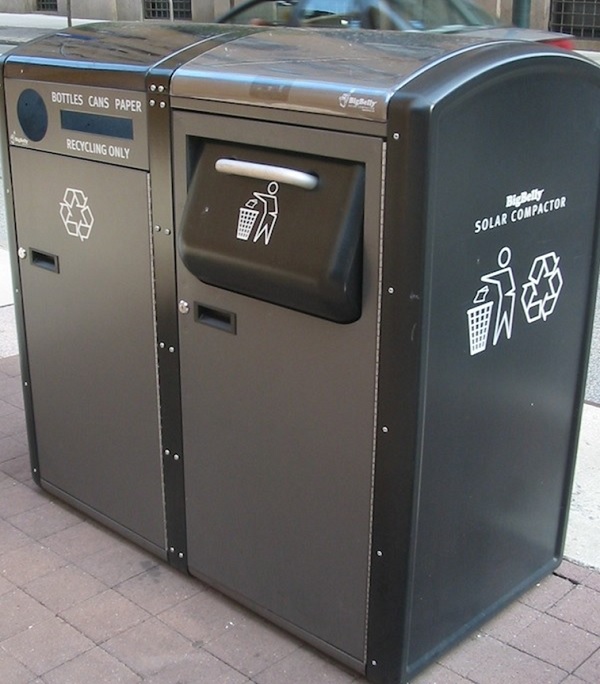
Smart trashcans in New York tell garbage collectors when they need to be emptied. They optimize trash service by ensuring drivers only make necessary stops, and drivers modify their route to reduce fuel consumption.
In the area of management, IoT supports cities through its implementation in major services and infrastructure such as transportation and healthcare. It also aids in other key areas like water control, waste management, and emergency management. Its real-time and detailed information facilitate more prompt decisions in contrast to the traditional process plagued by information lag, which can be critical in emergency management.
Standard state services are also improved by IoT, which can automate otherwise slow processes and trim unnecessary state expenses; for example, it can automate motor vehicle services for testing, permits, and licensing.
IoT also aids in urban improvement by skipping tests or poor research, and providing functional data for how the city can be optimized. This leads to faster and more meaningful changes.
Creating Jobs
IoT offers thorough economic analysis. It makes previous blind spots visible and supports better economic monitoring and modeling. It analyzes industry and the marketplace to spot opportunities for growth and barriers.
National Defense
National threats prove diverse and complicated. IoT augments armed forces systems and services, and offers the sophistication necessary to manage the landscape of national defense. It supports better protection of borders through inexpensive, high performance devices for rich control and observation.
IoT automates the protection tasks typically spread across several departments and countless individuals. It achieves this while improving accuracy and speed.
IoT - Law Enforcement Applications
IoT enhances law enforcement organizations and practice, and improves the justice system. The technology boosts transparency, distributes critical data, and removes human intervention where it proves unnecessary.
Policing
Law enforcement can be challenging. IoT acts as an instrument of law enforcement which reduces manual labor and subjective decisions through better data, information sharing, and advanced automation. IoT systems shave costs by reducing human labor in certain areas such as certain traffic violations.
IoT aids in creating better solutions to problems by using technology in the place of force; for example, light in-person investigations of suspicious activities can be replaced with remote observation, logged footage of violations, and electronic ticketing. It also reduces corruption by removing human control and opinion for some violations.
This dart planted in a truck gate prevents dangerous car chases. A patrol car launches the tracking dart which pierces the vehicle. Then the main system receives all data needed to locate the vehicle.
Court System
Current court systems utilize traditional technology and resources. They generally do not exploit modern analytics or automation outside of minor legal tasks. IoT brings superior analytics, better evidence, and optimized processes to court systems which accelerate processes, eliminate excessive procedures, manage corruption, reduce costs, and improve satisfaction.
In the criminal court system, this can result in a more effective and fair system. In routine court services, it introduces automation similar to that of common government office services; for example, IoT can automate forming an LLC.
IoT combined with new regulations can remove lawyers from many common legal tasks or reduce the need for their involvement. This reduces costs and accelerates many processes which often require months of traversing legal procedures and bureaucracy.
Internet of Things - Consumer Applications
Consumers benefit personally and professionally from the optimization and data analysis of IoT. IoT technology behaves like a team of personal assistants, advisors, and security. It enhances the way we live, work, and play.
Home
IoT takes the place of a full staff −
- Butler − IoT waits for you to return home, and ensures your home remains fully prepared. It monitors your supplies, family, and the state of your home. It takes actions to resolve any issues that appear.
- Chef − An IoT kitchen prepares meals or simply aids you in preparing them.
- Nanny − IoT can somewhat act as a guardian by controlling access, providing supplies, and alerting the proper individuals in an emergency.
- Gardner − The same IoT systems of a farm easily work for home landscaping.
- Repairman − Smart systems perform key maintenance and repairs, and also request them.
- Security Guard − IoT watches over you 24/7. It can observe suspicious individuals miles away, and recognize the potential of minor equipment problems to become disasters well before they do.
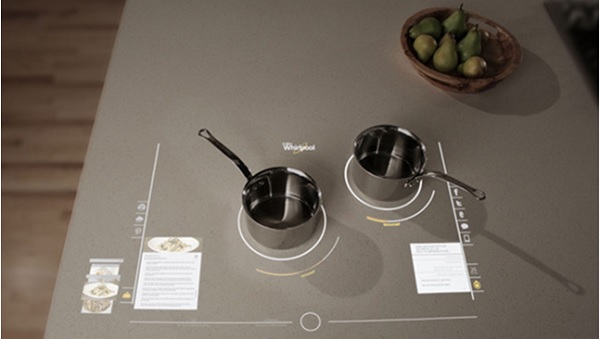
This smart, connected stove from Whirlpool allows two different heat settings on the same surface, remote monitoring, and remote control.
Work
A smart office or other workspace combines customization of the work environment with smart tools. IoT learns about you, your job, and the way you work to deliver an optimized environment. This results in practical accommodations like adjusting the room temperature, but also more advanced benefits like modifying your schedule and the tools you use to increase your output and reduce your work time. IoT acts as a manager and consultant capable of seeing what you cannot.
Play
IoT learns as much about you personally as it does professionally. This enables the technology to support leisure −
- Culture and Night Life − IoT can analyze your real-world activities and response to guide you in finding more of the things and places you enjoy such as recommending restaurants and events based on your preferences and experiences.
- Vacations − Planning and saving for vacations proves difficult for some, and many utilize agencies, which can be replaced by IoT.
- Products and Services − IoT offers better analysis of the products you like and need than current analytics based on its deeper access. It integrates with key information like your finances to recommend great solutions.
Internet of Things - Thingworx
Thingworx is a platform for the rapid development and deployment of smart, connected devices. Its set of integrated IoT development tools support connectivity, analysis, production, and other aspects of IoT development.
It offers Vuforia for implementing augmented reality development, and Kepware for industrial connectivity. KEPServerEX provides a single point for data distribution, and facilitates interoperability when partnered with a ThingWorx agent.

Components
Thingworx offers several key tools for building applications. These tools include the Composer, the Mashup Builder, storage, a search engine, collaboration, and connectivity. The Composer provides a modeling environment for design testing. The Mashup Builder delivers easy dashboard building through common components (or widgets); for example, buttons, lists, wikis, gauges, and etc.
Thingworx uses a search engine known as SQUEAL, meaning Search, Query, and Analysis. Users employ SQUEAL in analyzing and filtering data, and searching records.
Interface
The ThingWorx platform uses certain terms you must familiarize yourself with. In the main screen's top menu, you search for entities or create them. “Entity” refers to something created in ThingWorx. You can also import/export files and perform various operations on them.
In the left menu, you find entity groups, which are used to produce models and visualize data; and manage storage, collaboration, security, and the system.

When you select the Modeling category in the menu, you begin the process by creating an entity. The entity can be any physical device or software element, and it produces an event on changes to its property values; for example, a sensor detects a temperature change. You can set events to trigger actions through a subscription which makes decisions based on device changes.
Data Shapes consist of one or more fields. They describe the data structure of custom events, infotables, streams, and datatables. Data shapes are considered entities.
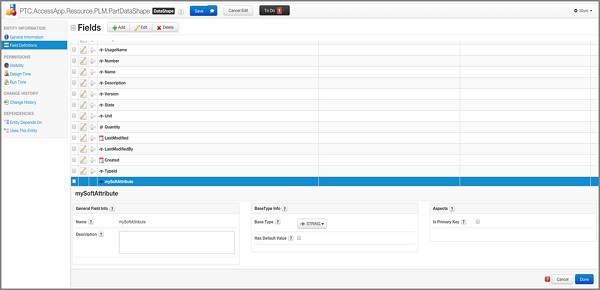
Thing Templates and Thing Shapes allow developers to avoid repeating device property definitions in large IoT systems. Developers create Thing Templates to allow new devices to inherit properties. They use Thing Shapes to define Templates, properties, or execute services.
Note a Thing only inherits properties, services, events, and other qualities from a single template, however, Things and templates can inherit properties from multiple Thing Shapes.
Development
ThingWorx actually requires very little programming. Users connect devices, establish a data source, establish device behaviors, and build an interface without any coding. It also offers scalability appropriate for both hobbyist projects and industrial applications.
IoT - CISCO Virtualized Packet Zone
Cisco Virtualized Packet Core (VPC) is a technology providing all core services for 4G, 3G, 2G, WiFi, and small cell networks. It delivers networking functionality as virtualized services to allow greater scalability and faster deployment of new services at a reduced cost. It distributes and manages packet core functions across all resources, whether virtual or physical. Its key features include packet core service consolidation, dynamic scaling, and system agility.
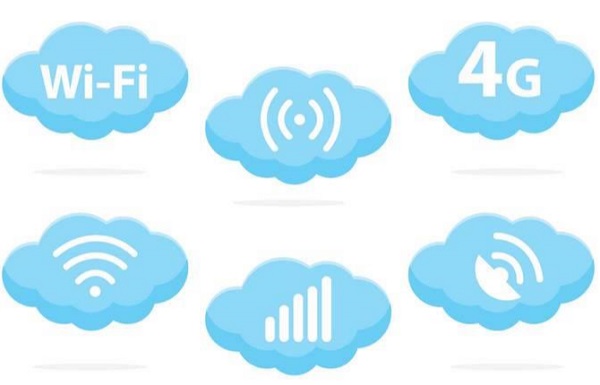
Its technology supports IoT by offering network function virtualization, SDN (software-defined networking), and rapid networked system deployment. This proves critical because its virtualization and SDN support low-power, high flow networking, and the simple deployment of a wide variety of small devices. It eliminates many of the finer details of IoT systems, and conflicts, through consolidating into a single system and single technology for connecting and integrating all elements.
Use Case : Smart Transportation
Rail transportation provides a viable example of the power of VPC. The problems VPC solves relate to safety, mobility, efficiency, and service improvement −
- Rail applications use their own purpose-built networks, and suffer from interoperability issues; for example, trackside personnel cannot always communicate with local police due to different technologies.
- Determining if passengers need extra time to board remains a mostly manual task.
- Data updates, like schedules, remain manual.
- Each piece of equipment, e.g., a surveillance camera, requires its own network and power source.
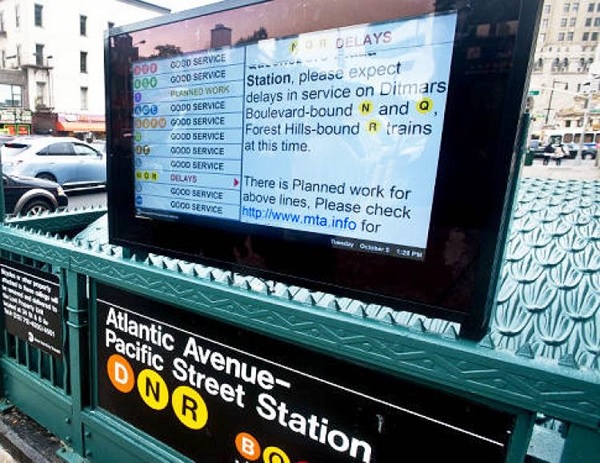
A smart MRT sign in New York
VPC improves service by introducing direct communication over a standard network, more and automated monitoring, automatic data updates through smart signs, and native IP networks for all devices along with PoE (Power over Ethernet) technology. This results in passengers who feel safer, and enjoy a better quality service.
Internet of Things - Salesforce
The Salesforce IoT Cloud is a platform for storing and processing IoT data. It uses the Thunder engine for scalable, real-time event processing. Its collection of application development components, known as Lightning, powers its applications. It gathers data from devices, websites, applications, customers, and partners to trigger actions for real-time responses.

Salesforce, a CRM leader, decided to enter this space due to the need to remain competitive in the coming era. The IoT cloud adds to Salesforce by expanding its reach, and the depth of its analytics.
Salesforce combined with IoT delivers dramatically improved customer service with tighter integration and responses to real-time events; for example, adjustments in wind turbines could trigger automatic rebooking of delayed/canceled connecting flights before airline passengers land.
Electric Imp
The Electric Imp platform is Salesforce's recommended method for quickly connecting devices to the cloud. You develop applications through the Squirrel language; a high level, OO, lightweight scripting language. Applications consist of two modules: the device module, which runs on the device; and the agent module, which runs in the Electric Imp cloud. The platform ensures secure communication between the modules, and you send devices messages with a simple call −
agent.send("nameOfmessage", data);
Listen for messages on the agent with the following code −
device.on("nameOfmessage", function(data) { //Data operations });
Beyond these basic tasks, coding for device interaction, monitoring, and response resembles standard web application development, and uses a simple, easy-to-learn syntax.
Internet of Things - GE Predix
GE (General Electric) Predix is a software platform for data collection from industrial instruments. It provides a cloud-based PaaS (platform as a service), which enables industrial-grade analytics for operations optimization and performance management. It connects data, individuals, and equipment in a standard way.
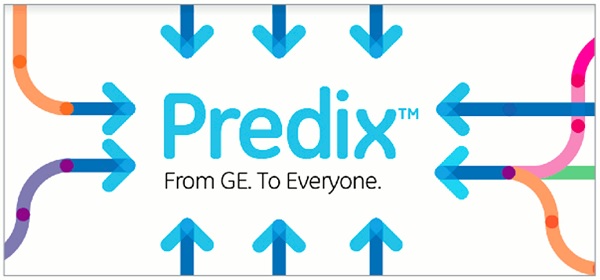
Predix was designed to target factories, and give their ecosystems the same simple and productive function as operating systems that transformed mobile phones. It began as a tool for General Electric's internal IoT, specifically created to monitor products sold.
Ge Predix Partnered with Microsoft Azure
Microsoft's Azure is a cloud computing platform and supporting infrastructure. It provides PaaS and IaaS, and assorted tools for building systems. Predix, recently made available on Azure, exploits a host of extra features like AI, advanced data visualization, and natural language technology. Microsoft plans to eventually integrate Predix with its Azure IoT suite and Cortana Intelligence suite, and also their well-established business applications. Azure will also allow users to build applications using Predix data. Note AWS and Oracle also support Predix.
Developer Kits
GE offers inexpensive developer kits consisting of general components and an Intel Edison processor module. Developers have the options of a dual core board and a Raspberry Pi board. Developers need only provide an IP address, Ethernet connection, power supply, and light programming to set data collection.
The kit automatically establishes the necessary connection, registers with the central Predix system, and begins transmitting environmental data from sensors. Users subscribe to hardware/software output, and GE Digital owns and manages the hardware and software for the user.
This kit replaces the awkward and involved assemblies of simulations and testing environments. In other simulations, developers typically use a large set of software (one for each device), and specific configurations for each connection. They also program the monitoring of each device, which can sometimes take hours. The kit reduces much of the time spent performing these tasks from hours to only minutes.
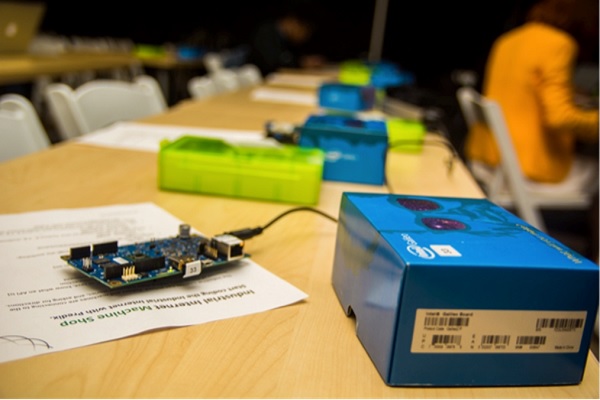
The Predix developer kit
The kit also includes software components for designing an IoT application that partners with Predix services. GE plans to release other versions of the kit for different applications.
Internet of Things - Eclipse
Eclipse IoT is an ecosystem of entities (industry and academia) working together to create a foundation for IoT based exclusively on open source technologies. Their focus remains in the areas of producing open source implementations of IoT standard technology; creating open source frameworks and services for utilization in IoT solutions; and developing tools for IoT developers.
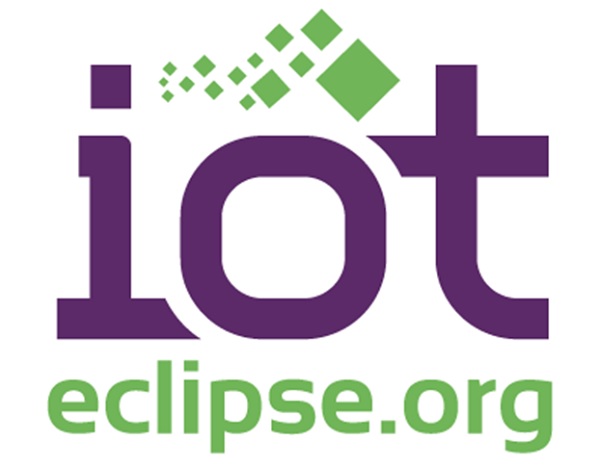
Smarthome Project
SmartHome is one of Eclipse IoT's major services. It aims to create a framework for building smart home solutions, and its focus remains heterogeneous environments, meaning assorted protocols and standards integration.
SmartHome provides uniform device and information access to facilitate interaction between devices. It consists of OSGi bundles capable of deployment in an OSGi runtime, with OSGi services defined as extension points.
OSGi bundles are Java class groups and other resources, which also include detailed manifest files. The manifest contains information on file contents, services needed to enhance class behavior, and the nature of the aggregate as a component. Review an example of a manifest below −
Bundle-Name : Hi Everyone // Bundle Name Bundle-SymbolicName : xyz.xyz.hievery1 // Header specifying an identifier Bundle-Description : A Hi Everyone bundle // Functionality description Bundle-ManifestVersion : 2 // OSGi specification Bundle-Version : 1.0.0 // Version number of bundle Bundle-Activator : xyz.xyz.Activator // Class invoked on bundle activation Export-Package : xyz.xyz.helloworld;version = "1.0.0" // Java packages available externally Import-Package : org.osgi.framework;version = "1.3.0" // Java packages needed from // external source
Eclipse SCADA
Eclipse SCADA, another major Eclipse IoT service, delivers a means of connecting various industrial instruments to a shared communication system. It also post-processes data and sends data visualizations to operators. It uses a SCADA system with a communication service, monitoring system, archive, and data visualization.
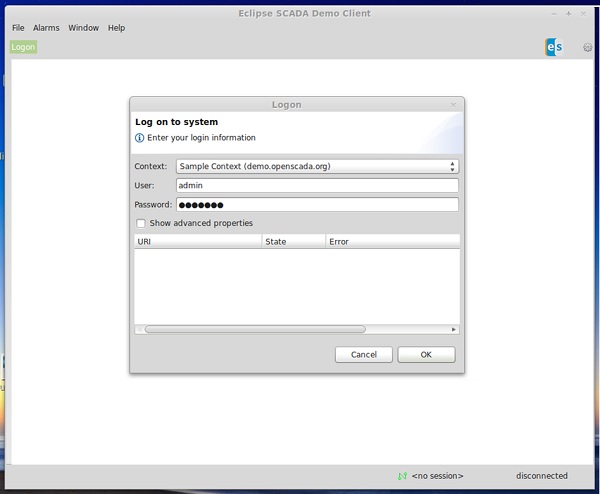
It aims to be a complete, state-of-the-art open source SCADA system for developing custom solutions. Its supported technologies and tools include shell applications, JDBC, Modbus TCP and RTU, Simatic S7 PLC, OPC, and SNMP.
Internet of Things - Contiki
Contiki is an operating system for IoT that specifically targets small IoT devices with limited memory, power, bandwidth, and processing power. It uses a minimalist design while still packing the common tools of modern operating systems. It provides functionality for management of programs, processes, resources, memory, and communication.
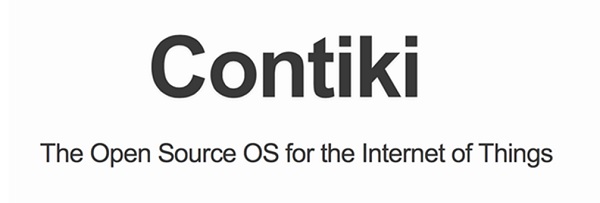
It owes its popularity to being very lightweight (by modern standards), mature, and flexible. Many academics, organization researchers, and professionals consider it a go-to OS. Contiki only requires a few kilobytes to run, and within a space of under 30KB, it fits its entire operating system − a web browser, web server, calculator, shell, telnet client and daemon, email client, vnc viewer, and ftp. It borrows from operating systems and development strategies from decades ago, which easily exploited equally small space.
Contiki Communication
Contiki supports standard protocols and recent enabling protocols for IoT −
- uIP (for IPv4) − This TCP/IP implementation supports 8-bit and 16-bit microcontrollers.
- uIPv6 (for IPv6) − This is a fully compliant IPv6 extension to uIP.
- Rime − This alternative stack provides a solution when IPv4 or IPv6 prove prohibitive. It offers a set of primitives for low-power systems.
- 6LoWPAN − This stands for IPv6 over low-power wireless personal area networks. It provides compression technology to support the low data rate wireless needed by devices with limited resources.
- RPL − This distance vector IPv6 protocol for LLNs (low-power and lossy networks) allows the best possible path to be found in a complex network of devices with varied capability.
- CoAP − This protocol supports communication for simple devices, typically devices requiring heavy remote supervision.
Dynamic Module Loading
Dynamic module loading and linking at run-time supports environments in which application behavior changes after deployment. Contiki's module loader loads, relocates, and links ELF files.
The Cooja Network Simulator
Cooja, the Contiki network simulator, spawns an actual compiled and working Contiki system controlled by Cooja.
Using Cooja proves simple. Simply create a new mote type by selecting the Motes menu and Add Motes → Create New Mote Type. In the dialog that appears, you choose a name for the mote, select its firmware, and test its compilation.
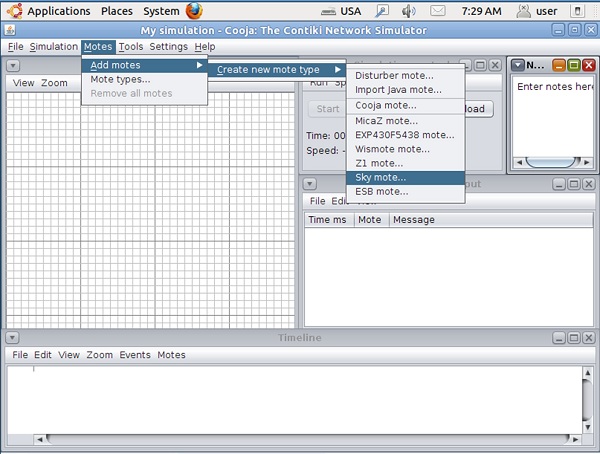
After creation, add motes by clicking Create. A new mote type will appear to which you can attach nodes. The final step requires saving your simulation file for future use.
Internet of Things - Security
Every connected device creates opportunities for attackers. These vulnerabilities are broad, even for a single small device. The risks posed include data transfer, device access, malfunctioning devices, and always-on/always-connected devices.
The main challenges in security remain the security limitations associated with producing lowcost devices, and the growing number of devices which creates more opportunities for attacks.

Security Spectrum
The definition of a secured device spans from the most simple measures to sophisticated designs. Security should be thought of as a spectrum of vulnerability which changes over time as threats evolve.
Security must be assessed based on user needs and implementation. Users must recognize the impact of security measures because poorly designed security creates more problems than it solves.
Example − A German report revealed hackers compromised the security system of a steel mill. They disrupted the control systems, which prevented a blast furnace from being shut down properly, resulting in massive damage. Therefore, users must understand the impact of an attack before deciding on appropriate protection.
Challenges
Beyond costs and the ubiquity of devices, other security issues plague IoT −
- Unpredictable Behavior − The sheer volume of deployed devices and their long list of enabling technologies means their behavior in the field can be unpredictable. A specific system may be well designed and within administration control, but there are no guarantees about how it will interact with others.
- Device Similarity − IoT devices are fairly uniform. They utilize the same connection technology and components. If one system or device suffers from a vulnerability, many more have the same issue.
- Problematic Deployment − One of the main goals of IoT remains to place advanced networks and analytics where they previously could not go. Unfortunately, this creates the problem of physically securing the devices in these strange or easily accessed places.
- Long Device Life and Expired Support − One of the benefits of IoT devices is longevity, however, that long life also means they may outlive their device support. Compare this to traditional systems which typically have support and upgrades long after many have stopped using them. Orphaned devices and abandonware lack the same security hardening of other systems due to the evolution of technology over time.
- No Upgrade Support − Many IoT devices, like many mobile and small devices, are not designed to allow upgrades or any modifications. Others offer inconvenient upgrades, which many owners ignore, or fail to notice.
- Poor or No Transparency − Many IoT devices fail to provide transparency with regard to their functionality. Users cannot observe or access their processes, and are left to assume how devices behave. They have no control over unwanted functions or data collection; furthermore, when a manufacturer updates the device, it may bring more unwanted functions.
- No Alerts − Another goal of IoT remains to provide its incredible functionality without being obtrusive. This introduces the problem of user awareness. Users do not monitor the devices or know when something goes wrong. Security breaches can persist over long periods without detection.
Internet of Things - Identity Protection
IoT devices collect data about their environment, which includes people. These benefits introduce heavy risk. The data itself does not present the danger, however, its depth does. The highly detailed data collection paints a very clear picture of an individual, giving criminals all the information they need to take advantage of someone.
People may also not be aware of the level of privacy; for example, entertainment devices may gather A/V data, or “watch” a consumer, and share intimate information. The demand and price for this data exacerbates the issue considering the number and diversity of parties interested in sensitive data.
Problems specific to IoT technology lead to many of its privacy issues, which primarily stem from the user's inability to establish and control privacy −
Consent
The traditional model for “notice and consent” within connected systems generally enforces existing privacy protections. It allows users to interact with privacy mechanisms, and set preferences typically through accepting an agreement or limiting actions. Many IoT devices have no such accommodations. Users not only have no control, but they are also not afforded any transparency regarding device activities.
The Right to be Left Alone
Users have normal expectations for privacy in certain situations. This comes from the commonly accepted idea of public and private spaces; for example, individuals are not surprised by surveillance cameras in commercial spaces, however, they do not expect them in their personal vehicle. IoT devices challenge these norms people recognize as the “right to be left alone.” Even in public spaces, IoT creeps beyond the limits of expected privacy due to its power.
Indistinguishable Data
IoT deploys in a wide variety of ways. Much of IoT implementation remains group targeted rather than personal. Even if users give IoT devices consent for each action, not every system can reasonably process every set of preferences; for example, small devices in a complex assembly cannot honor the requests of tens of thousands of users they encounter for mere seconds.
Granularity
Modern big data poses a substantial threat to privacy, but IoT compounds the issue with its scale and intimacy. It goes not only where passive systems cannot, but it collects data everywhere. This supports creation of highly detailed profiles which facilitate discrimination and expose individuals to physical, financial, and reputation harm.
Comfort
The growth of IoT normalizes it. Users become comfortable with what they perceive as safe technology. IoT also lacks the transparency that warns users in traditional connected systems; consequently, many act without any consideration for the potential consequences.
Internet of Things - Liability
The security flaws of IoT and its ability to perform certain tasks open the door to any associated liability. The three main areas of concern are device malfunction, attacks, and data theft. These issues can result in a wide variety of damages.
Device Malfunction
IoT introduces a deeper level of automation which can have control over critical systems, and systems impacting life and property. When these systems fail or malfunction, they can cause substantial damage; for example, if an IoT furnace control system experiences a glitch, it may fail in an unoccupied home and cause frozen pipes and water damage. This forces organizations to create measures against it.
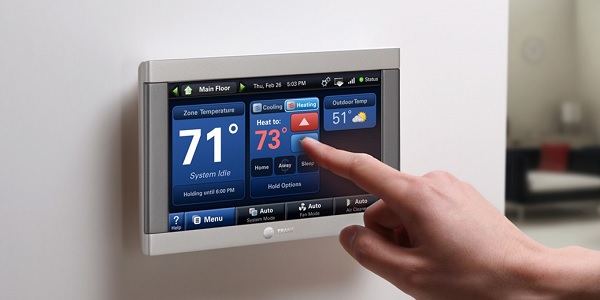
This smart thermostat allows attackers to gain remote access, and breach the rest of the network.
Cyber Attacks
IoT devices expose an entire network and anything directly impacted to the risk of attacks. Though those connections deliver powerful integration and productivity, they also create the perfect opportunity for mayhem like a hacked stove or fire safety sprinkler system. The best measures against this address the most vulnerable points, and provide custom protections such as monitoring and access privileges.
Some of the most effective measures against attacks prove simple −
- Built-in Security − Individuals and organizations should seek hardened devices, meaning those with security integrated in the hardware and firmware.
- Encryption − This must be implemented by the manufacturer and through user systems.
- Risk Analysis − Organizations and individuals must analyze possible threats in designing their systems or choosing them.
- Authorization − Devices, whenever possible, must be subject to privilege policies and access methods.
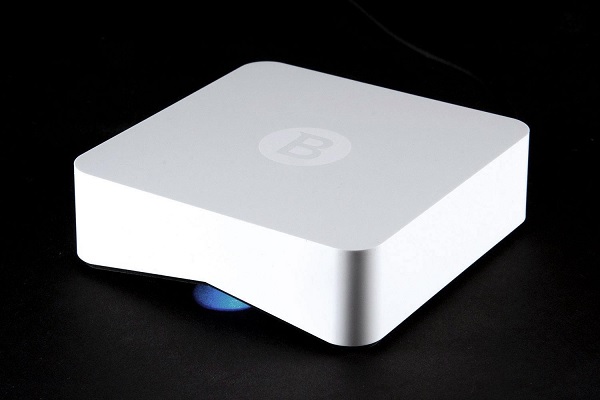
Bitdefender BOX secures all connected devices in the home.
Data Theft
Data, IoT's strength and weakness, proves irresistible to many. These individuals have a number of reasons for their interest − the value of personal data to marketing/advertising, identity theft, framing individuals for crimes, stalking, and a bizarre sense of satisfaction. Measures used to fight attacks are also effective in managing this threat.
No comments:
Post a Comment